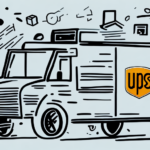How to Add Insurance to Your FedEx Package
Shipping your package with FedEx involves more than just selecting a service; it's crucial to consider the benefits of adding insurance. While most shipments arrive without issues, accidents and unforeseen circumstances can lead to damaged or lost packages. This guide covers everything you need to know about adding insurance to your FedEx package, including its importance, risks of shipping without insurance, determining package value, types of insurance available, and step-by-step instructions for adding insurance both online and at FedEx locations.
Why Adding Insurance to Your FedEx Package is Essential
When you send a package through FedEx, it undergoes multiple handling processes and travels through various transit modes, such as planes, trucks, and delivery vans. During this journey, your package is susceptible to potential damage, loss, theft, or other mishaps. Adding insurance protects the value of your shipment, providing peace of mind that you are covered in case anything goes wrong.
Moreover, insurance can offer coverage for unexpected delays. If your package is delayed due to extreme weather, transportation issues, or other unforeseen circumstances, insurance can help mitigate any additional costs or losses you might incur as a result of the delay.
FedEx offers different levels of insurance coverage based on the value of your shipment. Carefully evaluating the value of your package ensures you choose the appropriate level of insurance for adequate protection.
Source: FedEx Insurance Information
The Risks of Shipping Without Insurance
Opting not to add insurance to your FedEx package introduces significant risks. Without insurance, FedEx's liability is limited, and you may not recover the full value of your package if it is lost or damaged. This limitation means that for high-value shipments, the cost of replacing items can be substantial.
Additionally, without insurance, your package might be more prone to mishandling or loss during transit. Shipping companies have less incentive to take extra care with uninsured packages, potentially leading to increased damage or loss.
International shipments carry even higher risks. The complexity of international shipping, involving more handling and transfers, increases the likelihood of damage or loss. Without insurance, recovering the full value of your package in international transit is challenging.
Source: Transport Topics
Determining the Value of Your Package for Insurance
Before adding insurance to your package, accurately determining the value of its contents is essential. For easily replaceable items like clothing or books, valuation is straightforward. However, for one-of-a-kind or highly valuable items such as jewelry, artwork, or electronics, obtaining an appraisal or documentation of the item's worth is crucial.
FedEx's liability coverage has maximum value limits. If your package's value exceeds these limits, you must purchase additional insurance to ensure full coverage. Additionally, consider the sentimental value of items. Even if an item's monetary value is low, its emotional significance may warrant insuring the package for a higher amount.
Source: Insurance.com on Shipping Insurance
Understanding the Cost and Types of FedEx Insurance
The cost of insuring your FedEx package depends on several factors, including the value of the contents, the type of insurance, and the destination. For instance, insuring a package valued at $100 may cost only a few dollars, whereas insuring a package valued at $10,000 will be significantly more expensive. FedEx offers various insurance types to cater to different shipment needs:
- Declared Value Coverage: This basic insurance covers up to the declared value of the package, typically reflecting the contents' value.
- Freight Insurance: Designed for larger shipments, freight insurance covers both the contents' value and the shipping costs.
- FedEx® Declared Value Advantage: Provides coverage up to $100,000 for packages with a declared value of up to $50,000.
- FedEx® Collect on Delivery (C.O.D.): Allows the shipper to collect payment upon delivery and includes insurance coverage up to $5,000.
The cost of insurance may also vary based on the shipping method chosen. For example, insuring a package sent via FedEx Ground may be less expensive than using FedEx Express. Comparing insurance costs across different shipping methods can help you find the best value.
Source: FedEx Insurance Information
How to Add Insurance to Your FedEx Shipment
Adding Insurance Online
Adding insurance during the online shipment scheduling process is straightforward:
- Visit the FedEx Shipment Page.
- Enter your shipment details and select your shipping service.
- When prompted, choose to add insurance by entering the package's value.
- The insurance cost will be calculated and added to your total shipping fees.
- Complete the payment process to finalize your shipment with insurance.
It's essential to review the insurance terms and ensure the coverage aligns with your package's value before completing the shipment.
Adding Insurance at a FedEx Location
If you prefer to add insurance in person, follow these steps:
- Take your package to a FedEx location.
- Inform the staff that you wish to add insurance to your shipment.
- Provide details about the package contents to help determine appropriate coverage.
- Complete the necessary forms and pay the additional insurance fee.
- Receive an insurance certificate as confirmation of your covered shipment.
Ensure you have all necessary documentation, especially for high-value items, to facilitate the insurance process.
Source: FedEx Ship Manager
Filing a Claim for Lost or Damaged Packages
If your insured package is lost or damaged during transit, filing a claim with FedEx is essential to receive compensation:
- Gather necessary documentation, including proof of the package's value, photos of the damage, and a detailed description of the loss or damage.
- Visit the FedEx Claims Page to start the claim process.
- Submit the required documentation through the online portal or via mail as instructed.
- FedEx will review your claim and provide compensation based on the coverage and the documentation provided.
Be aware of the filing deadlines and specific requirements for different types of shipments, especially international ones, which may require additional paperwork.
Source: FedEx Claims Information
Preventing Package Damage During Shipping
While insurance offers financial protection, taking proactive steps can minimize the risk of damage during shipping:
- Use Sturdy Packaging: Select high-quality boxes and packing materials to provide adequate protection.
- Properly Cushion Items: Use bubble wrap, packing peanuts, or foam to secure items and prevent movement within the box.
- Label Clearly: Indicate "Fragile" or "Handle with Care" to alert handlers of the package's delicate contents.
- Avoid Overpacking or Underpacking: Ensure the box isn't too heavy or too light, maintaining a balance to prevent damage.
- Seal Securely: Use strong packing tape to seal all openings and reinforce the box.
Implementing these measures reduces the likelihood of your package being damaged, lost, or mishandled during transit.
Source: Packaging Strategies
Understanding FedEx's Liability Coverage Limitations
FedEx's liability coverage provides basic protection, but it's essential to understand its limitations:
- Coverage Limits: Standard liability coverage may not cover high-value items adequately. Additional insurance is necessary for expensive shipments.
- Exclusions: Certain items, such as cash, precious stones, or artworks, may have restrictions or require specialized insurance.
- Damage Due to Improper Packaging: If a package is damaged due to inadequate packaging, FedEx may not cover the loss.
- Time Frames: Claims must be filed within specific time limits post-delivery or loss discovery.
Carefully review FedEx's insurance terms and conditions to ensure you have appropriate coverage for your shipments.
Comparing FedEx's Insurance Options with Other Carriers
When deciding on insurance for your shipments, it's beneficial to compare FedEx's options with those of other carriers:
- UPS: Offers similar insurance services with declared value coverage and additional options for high-value items.
- USPS: Provides insurance with different coverage limits and may offer more economical options for smaller packages.
- DHL: Specializes in international shipping with various insurance plans tailored for global logistics needs.
Each carrier has its own set of policies, coverage limits, and pricing structures. Assessing these factors helps you choose the best insurance option that aligns with your shipping requirements and budget.
Source: MoneyUnder30 Shipping Insurance Comparison
Conclusion
Adding insurance to your FedEx package is a vital step in protecting your valuable shipments against potential risks. By understanding the importance of insurance, the associated costs, the types of coverage available, and the procedures for adding insurance and filing claims, you can ensure your packages arrive safely and securely. Additionally, taking preventive measures in packaging can further minimize the risk of damage during transit. Always review the insurance terms and consider comparing options across different carriers to make an informed decision that best suits your shipping needs.






















